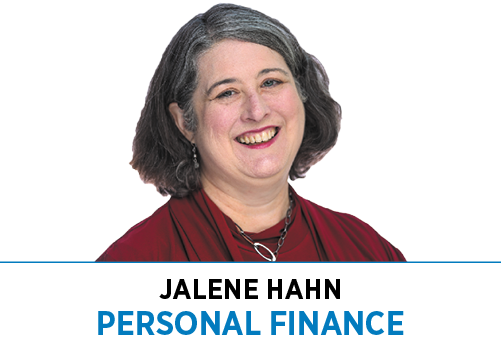Subscriber Benefit
As a subscriber you can listen to articles at work, in the car, or while you work out. Subscribe Now Saving for retirement is not easy, and with the multiple options available, it can be difficult to take the first step. One of the major employers in Columbus has introduced a Roth option to its 401(k) plan, and we are starting to get questions about participating. Not to be cheeky, but I respond with my favorite answer: “It depends.” The Roth 401(k) option is not widely used, but for the right situation can be extremely beneficial.
Saving for retirement is not easy, and with the multiple options available, it can be difficult to take the first step. One of the major employers in Columbus has introduced a Roth option to its 401(k) plan, and we are starting to get questions about participating. Not to be cheeky, but I respond with my favorite answer: “It depends.” The Roth 401(k) option is not widely used, but for the right situation can be extremely beneficial.
How they work
When looking at saving for retirement, there are two major factors to consider. The first is individual plan versus employer-sponsored plan. The other is pre-tax versus after-tax.
Individual plans break down into IRA or Roth IRA. Employer-sponsored plans are like alphabet soup; for simplicity, I refer to them as 401(k) plans. Employer-sponsored plans have higher contribution limits and no income limits on ability to contribute, and most enjoy employer-matching contributions.
With pre-tax retirement accounts, the tax break occurs at the front end when you make the contributions. When distributions occur, you will owe taxes on those contributions as well as the earnings they have generated.
After-tax accounts work in reverse. With Roth accounts (either individual or employer-sponsored), you do not receive a current tax benefit for contributions made into the account. The advantage comes when you take a distribution. At distribution, you pay no taxes on either the amounts contributed or the earnings accumulated over time. The ability to use an individual Roth is subject to income limits and, at some point, might no longer be an option.
Right for you or not
When you consider taking advantage of a Roth 401(k) option (after-tax, employer-sponsored), your decision uses a current versus future tax-rate frame of reference. The decision is when you pay taxes and what you think your future tax rates will be. Trade-off considerations include your age, current versus future income, filing status of single versus married (now and in the future), and the changing tax environment.
If you are young with higher future earnings potential, it would make sense to take advantage of the tax-free lifetime earnings growth on your retirement contributions. If you are in your peak earnings years, the current tax deduction might be most beneficial.
Best situation
The consensus is that we are in a low-tax-rate environment, and that taxes will need to increase in the future. In most instances—when you are just starting out, your income will increase over time, and you have many working years before you will need to take distributions—taking advantage of a Roth 401(k) option makes sense. The concept of compounding interest makes the tax-free distributions of future gains more beneficial than a current reduction in income taxes. Roth earnings are one of the few avenues to tax-free income.
As you get older and have less time for earnings to compound, the calculus changes. Your decision becomes more complex and needs to expand to look at more factors than just age, income and tax rates.
Looking at future required minimum distributions and changing marital status might also impact your decision. The tax brackets for single individuals are narrower, deductions are lower, and it is easier to move into a higher tax bracket. Legacy aspirations might need to be factored in. If you have a large retirement account and plan to leave assets to the next generation, that next generation must now take distributions over 10 years.
Whatever your situation, whatever access you have to retirement accounts, either as an individual or through an employer-sponsored plan, starting early and saving for retirement is critical. Start by saving 1% to 3% of your gross pay and increase 1% a year until you are up to a minimum of 15%. Your future self will thank you. Living on only Social Security is neither easy nor fun.•
__________
Hahn is a certified financial planner and owner of WWA Planning and Investments in Columbus. She can be reached at 812-379-1120 or jalene@wwafp.com.
Please enable JavaScript to view this content.
